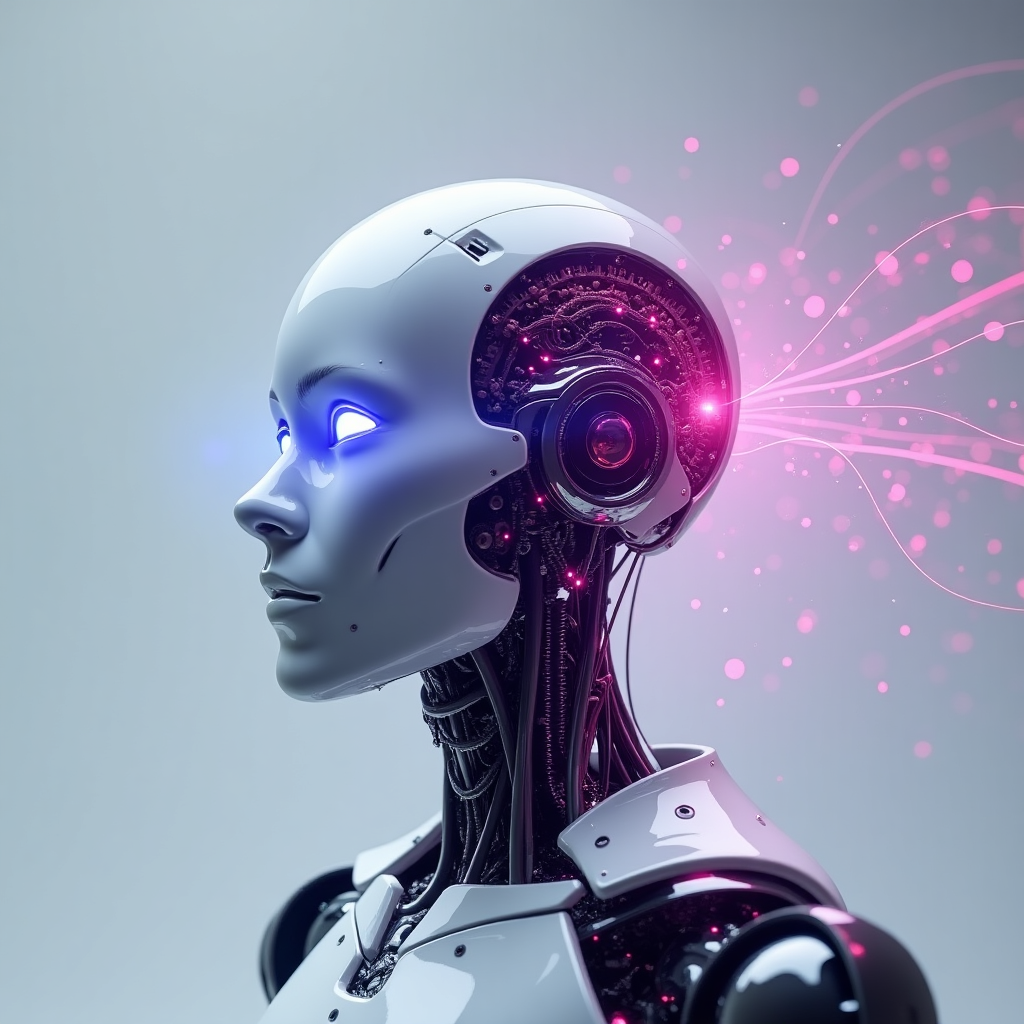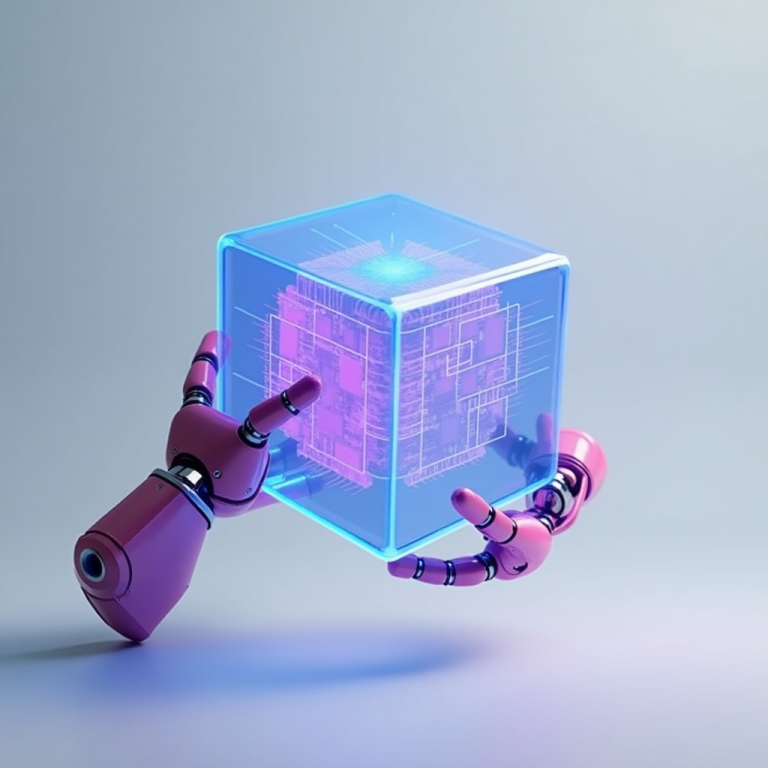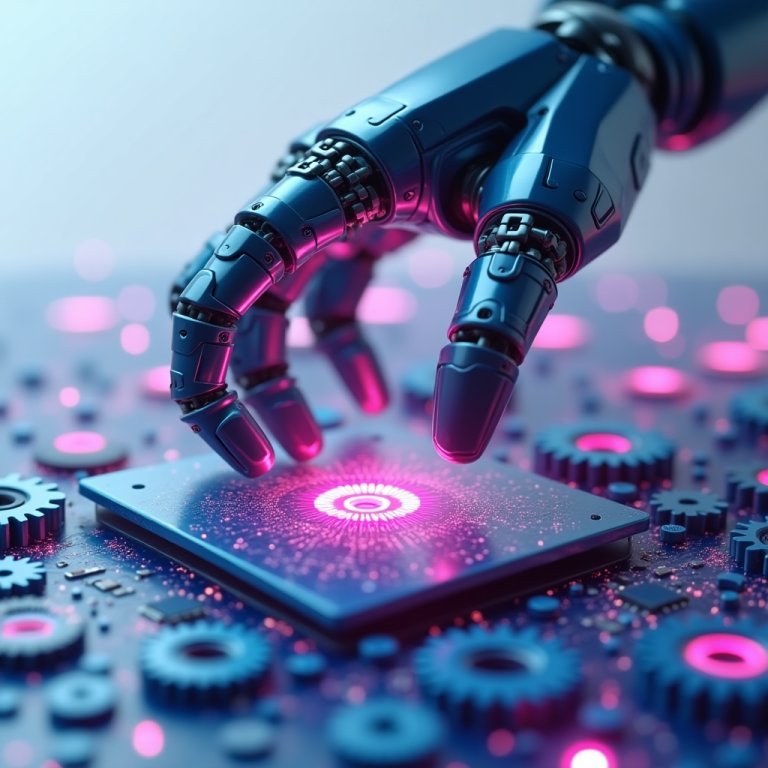The difference between artificial intelligence (AI) and machine learning (ML) is one of the most common questions among tech professionals, students, and businesses. AI and ML are often used interchangeably, but they have distinct functions, applications, and career paths.
In this blog, we’ll break down:
- The core differences between AI and ML
- How they work and their real-world applications
- Career opportunities in AI and ML, including machine learning engineer jobs
- The best AI and ML courses to build your expertise
Let’s dive in!
Table Of Contents
What is Artificial Intelligence?
Artificial intelligence is the broader concept of machines mimicking human intelligence. AI systems can perceive, reason, learn, and make decisions without explicit programming.
Key Features of AI:
- Problem-Solving & Decision-Making – AI systems like IBM Watson analyze vast amounts of data to generate insights.
- Natural Language Processing (NLP) – AI powers tools like Google Assistant and ChatGPT to understand human language.
- Computer Vision – AI enables applications like self-driving cars and medical imaging analysis.
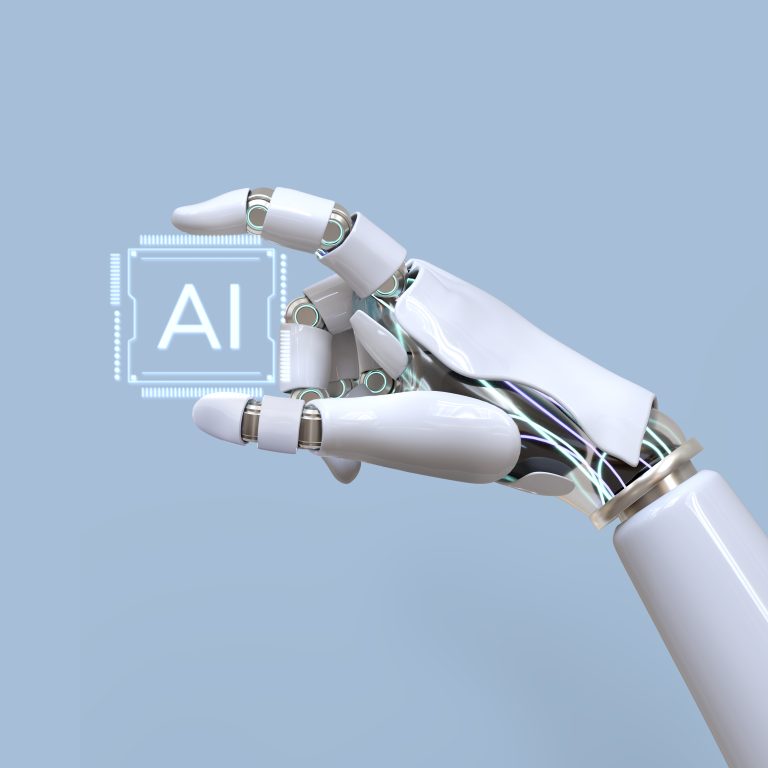
Types of AI
1. Narrow AI
Narrow AI refers to AI systems designed for specific tasks. These models cannot think or perform beyond their programmed functions but excel at what they are trained to do.
💡 How It’s Changing the Future:
Narrow AI is already widely used in industries like healthcare, finance, and retail. As advancements continue, these models will become even more sophisticated, improving automation, decision-making, and efficiency.
🔍 Real-World Applications:
- Virtual Assistants: Siri, Alexa, and Google Assistant help users with daily tasks.
- Recommendation Systems: Netflix, YouTube, and Spotify personalize content suggestions.
- Fraud Detection: Banks use AI to identify suspicious transactions.
- Healthcare AI: IBM Watson assists doctors in diagnosing diseases.
2. General AI
General AI refers to an advanced system that can understand, learn, and apply knowledge across a wide range of tasks—just like a human. Unlike Narrow AI, which is task-specific, General AI would have the ability to think, reason, and adapt autonomously.
💡 How It’s Changing the Future:
Though not yet fully realized, General AI could revolutionize industries by handling multiple complex functions without human intervention. It could replace traditional problem-solving processes, making businesses and workflows more intelligent and adaptable.
🔍 Potential Applications (Once Developed):
- Autonomous Robots: Machines capable of independent reasoning in unpredictable environments.
- Advanced Research Assistants: AI capable of forming hypotheses and conducting experiments in medicine and science.
- AI in Education: Virtual tutors that adapt to individual student learning styles.
3. Super AI
Super AI is a hypothetical form of AI that surpasses human intelligence in every way, including problem-solving, creativity, and emotional intelligence.
💡 How It’s Changing the Future:
While still theoretical, Super AI could lead to significant breakthroughs in science, medicine, and space exploration. However, it also raises ethical concerns, requiring strict governance and safeguards.
🔍 Potential Applications (If Achieved):
- Advanced Scientific Discovery: AI-driven research for curing diseases, climate change solutions, and material engineering.
- Global Problem Solving: Addressing critical world issues such as food shortages, energy crises, and economic modeling.
- AI-Led Governance: AI-assisted policy-making and governance with data-driven decision-making.
What is Machine Learning?
Machine learning is a subset of AI that focuses on training models to learn from data and make predictions without being explicitly programmed.
Key Features of ML:
- Pattern Recognition – ML identifies trends in data (e.g., fraud detection in banking).
- Predictive Analysis – ML powers recommendation engines like Netflix and Amazon.
- Automation – ML automates tasks like spam email filtering and chatbots.
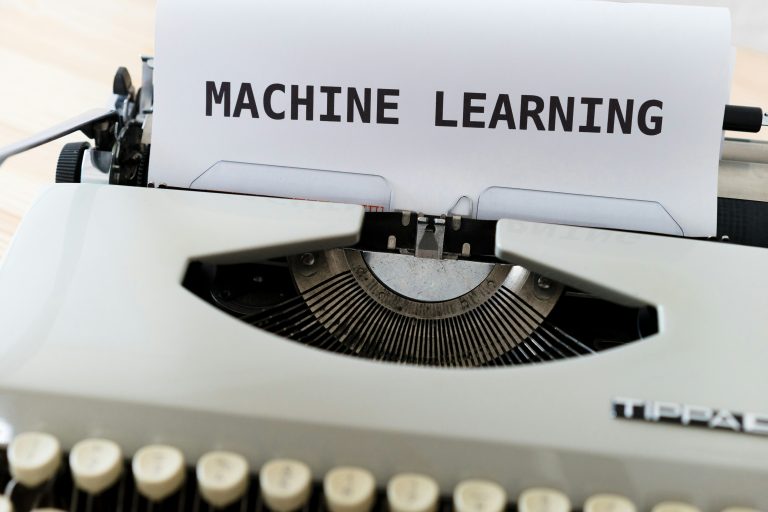
Types of Machine Learning
1. Supervised Learning
Supervised Learning is a type of ML where models are trained on labeled data. The system learns to map input data to the correct output using known examples.
🔍 How It Works:
The model is fed with input-output pairs (e.g., an image of a cat labeled as “cat”).
Over time, it learns patterns and improves its accuracy in making predictions.
Once trained, it can classify new, unseen data based on learned patterns.
💡 Real-World Applications:
- Email Spam Detection: Classifies emails as spam or not spam based on labeled examples.
- Fraud Detection in Banking: Identifies suspicious transactions using historical fraud data.
- Medical Diagnosis: Analyzes patient data to detect diseases like cancer or diabetes.
- Speech Recognition: Virtual assistants like Google Assistant and Siri use supervised learning to understand speech.
2. Unsupervised Learning
Unsupervised Learning involves training models on unlabeled data. The system identifies patterns, clusters, or anomalies in data without predefined categories.
🔍 How It Works:
The model is provided with raw data without predefined outputs.
It finds hidden structures and relationships among the data points.
Used mainly for clustering, anomaly detection, and pattern recognition.
💡 Real-World Applications:
- Customer Segmentation: E-commerce businesses group customers based on shopping behavior for personalized marketing.
- Anomaly Detection: Banks detect unusual transactions that may indicate fraud.
- Recommendation Systems: Netflix and Amazon suggest content based on user behavior without explicit training labels.
- Genetic Research: AI identifies patterns in DNA sequences for disease predictions.
3. Reinforcement Learning
Reinforcement Learning (RL) is an ML technique where models learn through trial and error by interacting with an environment and receiving rewards or penalties based on actions.
🔍 How It Works:
The AI system makes decisions within a defined environment.
Positive outcomes are rewarded, while negative outcomes are penalized.
Over time, the model refines its decision-making to maximize long-term rewards.
💡 Real-World Applications:
- Self-Driving Cars: AI agents learn to navigate roads and avoid obstacles.
- Robotics: Machines optimize performance in industrial automation and warehouse management.
- Game AI: AI like DeepMind’s AlphaGo learns strategies and outperforms human players.
- Stock Market Trading: AI-driven trading algorithms learn patterns to maximize profits.
Artificial Intelligence and Machine Learning Difference
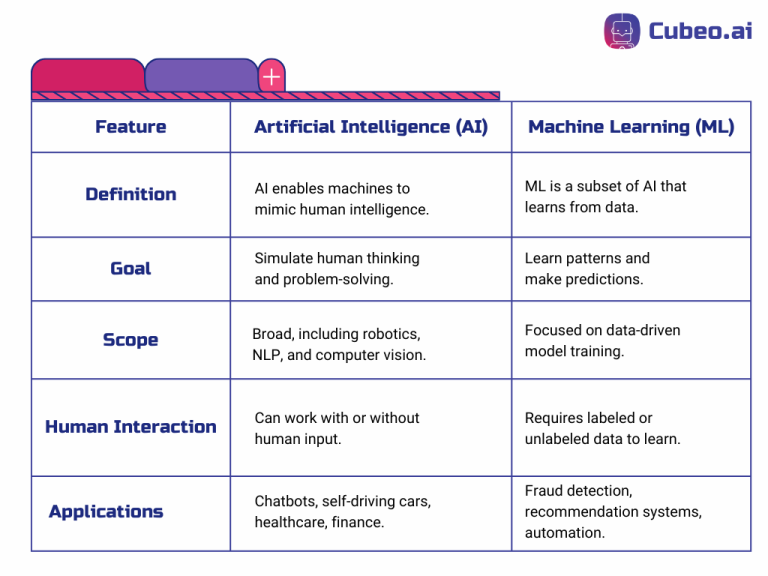
Both AI and ML are interconnected, but ML focuses on learning from data, whereas AI encompasses a wider range of intelligent behaviors.
Career Opportunities in AI & ML
The demand for AI and ML professionals is skyrocketing. According to the U.S. Bureau of Labor Statistics, AI and ML-related jobs are expected to grow 23% by 2030.
Top AI and Machine Learning Engineer Jobs:
- Machine Learning Engineer – Builds and optimizes ML models.
- AI Research Scientist – Develops cutting-edge AI algorithms.
- Data Scientist – Analyzes data trends using ML techniques.
- Computer Vision Engineer – Works on AI-powered image recognition.
- Natural Language Processing (NLP) Engineer – Specializes in AI language models like ChatGPT.
Looking for AI career insights? Read IBM’s AI Career Guide.
Best Artificial Intelligence and Machine Learning Courses
If you want to build a career in AI and ML, enrolling in a structured course is the best way to start.
Top Online Courses to Learn AI & ML:
🎓 Columbia University: AI vs. ML Course – A deep dive into AI and ML fundamentals.
🎓 Coursera: Machine Learning by Andrew Ng – A beginner-friendly ML course from Stanford.
🎓 Google AI: Machine Learning Crash Course – Hands-on learning with TensorFlow.
These courses offer a strong foundation in AI and ML, whether you’re a beginner or an experienced professional.
How Cubeo AI Fits into the AI & ML Revolution
As AI and ML continue to transform industries, Cubeo AI empowers businesses with no-code AI automation, making it easier to integrate AI-driven workflows without technical expertise. Whether you’re streamlining recruitment, marketing, or customer engagement, Cubeo AI enables you to build custom AI Agents that enhance efficiency and decision-making.
🚀 Want to leverage AI without coding? Explore Cubeo AI today!
The Future of AI & ML
AI and ML are continuously evolving, shaping automation, robotics, and intelligent systems across industries.
Predictions for AI & ML in 2025:
- AI-powered virtual assistants will become more advanced.
- ML will drive hyper-personalized customer experiences.
- Ethical AI and regulations will play a crucial role in AI governance.
Ready to explore AI-powered automation? Learn more about AI tools from MIT’s AI Report.
Final Thoughts
Understanding the difference between artificial intelligence and machine learning is essential for anyone looking to enter the AI-driven world. While AI is the broader concept of intelligent machines, ML is a key subset focused on learning from data.
Whether you’re an aspiring AI engineer, a business leader, or simply curious about the future, now is the time to dive into AI and ML.
